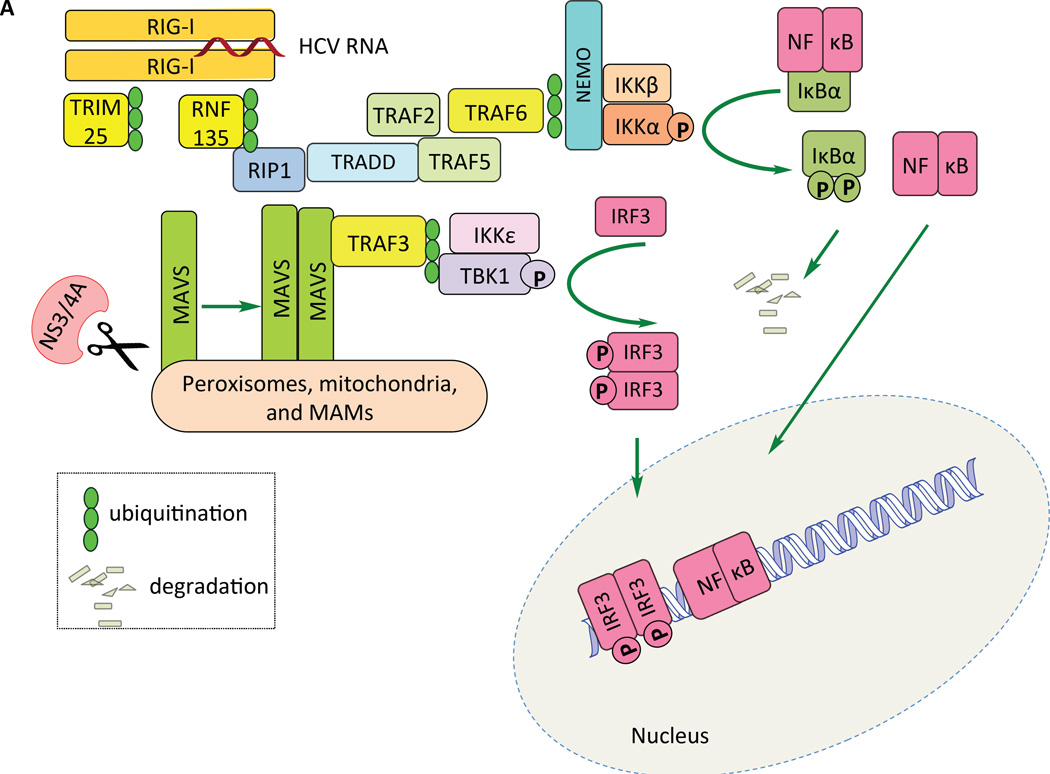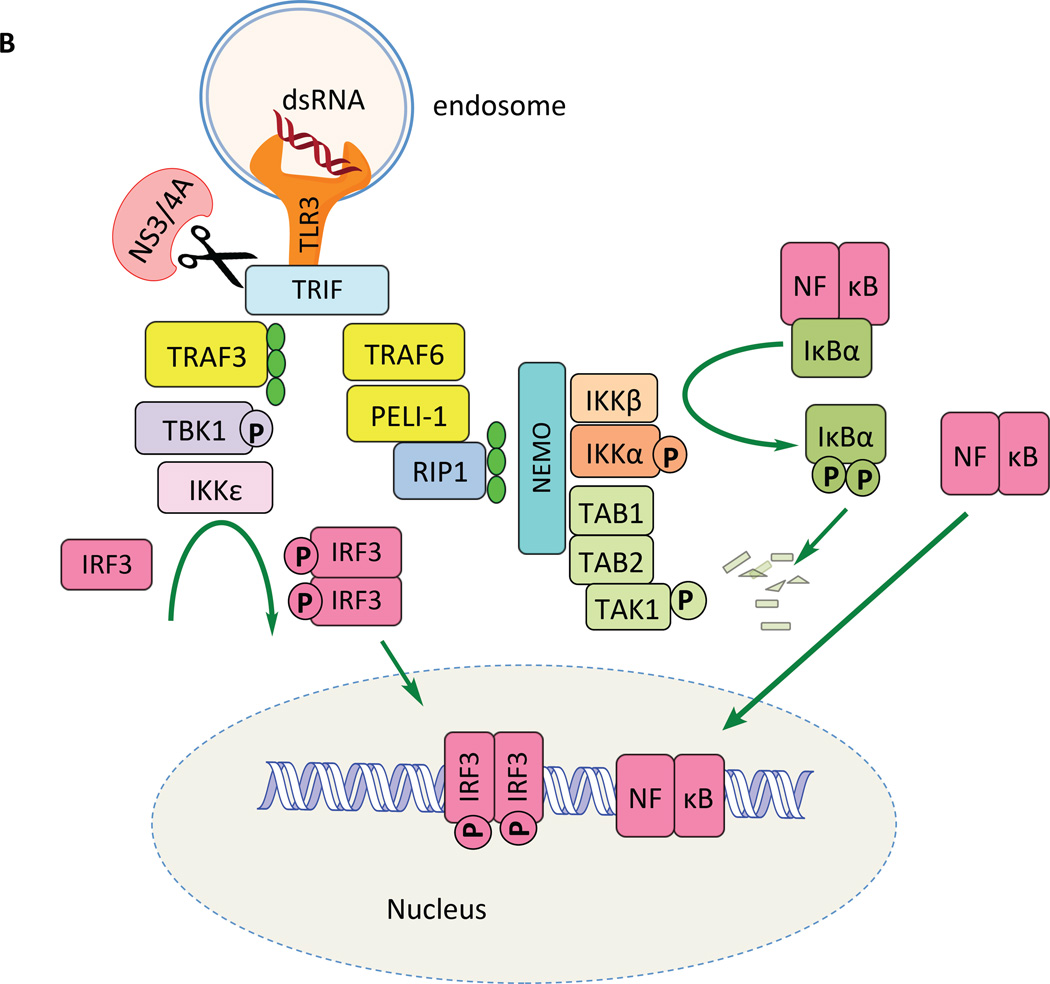Figure 2.
Innate immune activation by HCV RNA. A) RIG-I binds to PAMPs in HCV RNA and changes its conformation, activating one or more E3 ubiquitin ligases (yellow shapes). Ubiquitinated RIG-I may activate MAVS, which then forms prion-like aggregates that recruit additional ubiquitin ligases. Recent evidence suggests that MAVS on peroxisomes is particularly important for induction of IFNλ. Subsequent ubiquitination steps stimulate recruitment of enzymes that activate the downstream IRF3 and NFκB pathways. HCV’s NS3/4A protease can disable this pathway by cleaving MAVS near its transmembrane domain. B) TLR3 recognizes dsRNA within endosomal compartments, signaling via the adaptor, TRIF. TRIF stimulates ubiquitin-conjugating enzymes, resulting in recruitment of enzymes that activate the IRF3 and NFκB transcription factors. HCV’s NS3-4A protease can disable TLR3 signaling by cleaving TRIF.


